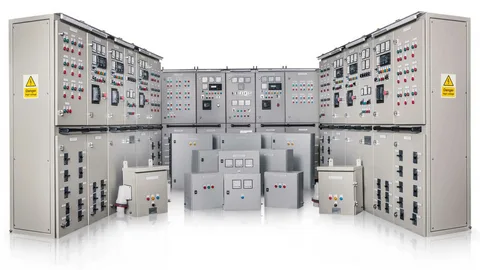
As industries continue to evolve, the need for increased efficiency and productivity becomes more pressing. This is especially true for factories, where output is directly tied to profitability. One way to achieve this is through electrical automation. By implementing automated systems, factories can streamline their processes, reduce downtime, and ultimately increase output.
In this blog post, we will explore five ways in which electrical automation can be used to optimize factory output, providing practical tips and insights that can be applied in a variety of industries. Whether you’re a factory owner looking to improve your bottom line or an engineer seeking to enhance your skills, these tips are sure to be valuable. So, let’s dive in!
1. Increased Productivity –
Electrical Automation makes it easier to monitor the production process and identify opportunities for improved efficiency. The automated system will also be able to identify any issues or errors quickly and take corrective action as needed. This reduces the amount of time wasted on manual processes, allowing you to get more done faster.
2. Improved Quality Control –
Automated systems are designed to perform tasks accurately and consistently, which helps ensure that your products are of a higher quality than those produced manually. This means fewer customer complaints and less waste due to defective materials or products. In addition, automated systems can provide detailed data about each process so you can spot potential problems before they become major issues.

3. Cost Reduction –
By automating certain processes, you won’t need as many people doing manual labor, which will reduce costs associated with labor such as insurance premiums and benefits packages for employees. Automated systems also use less energy than manual processes, resulting in lower energy bills for the company over time.
4. Environmental Benefits –
Electrical automation uses fewer resources than manual labor does, making it more environmentally friendly than traditional production methods. This helps reduce your overall carbon footprint as well as your bottom line costs associated with energy usage and waste disposal fees associated with manual processes…
5 Safety Improvements –
Automated systems mean fewer people in direct contact with potentially dangerous materials or equipment, reducing the chances of an accident occurring in the workplace due to human error or lack of knowledge about safety protocols while on the job site. In addition, automated systems are designed with safety features built-in that help prevent accidents from occurring in the first place by alerting workers when something isn’t right within the system itself…
Conclusion:
Electrical automation is an effective way to optimize your factory or manufacturing business operations while reducing costs and increasing safety standards within your workplace environment. Investing in electrical automation can be a great way to gain a competitive edge over other businesses while helping protect our planet through reduced resource consumption and improved environmental stewardship practices throughout your operations… Taking advantage of this technology can help improve both productivity and profitability for years to come!





